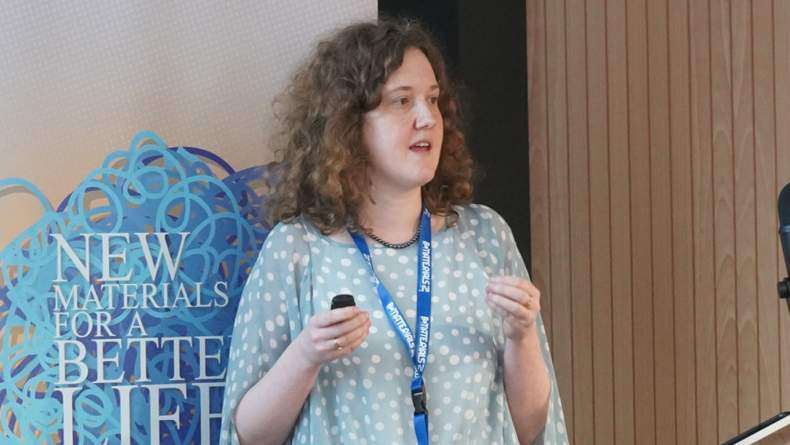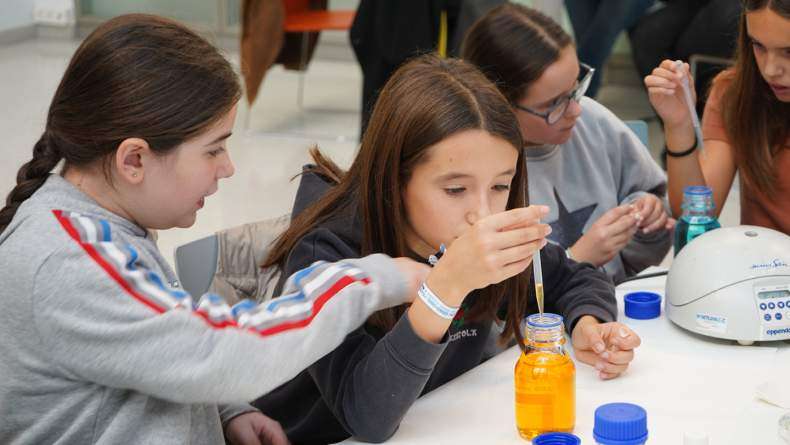BCMaterials Fortnightly Seminars #45

SARA DEL HOYO
(UPV/EHU)
PREPARATION OF POLYMER MULTILAYER SYSTEMS TO OPTIMIZE BIOMEDICAL DEVICES
There is an increasing demand of new processable biomaterials, capable of controlling cell adhesion and meeting the broad range of specific requirements needed in the development of tailored surfaces for biomedical applications. Polyethylene terephthalate (PET), a hydrophobic polymer used in traditional biomedical devices and as substrate for in vitro studies, is proposed to be modified by layer by layer assembly of polysaccharides in order to inhibit polymer–bacteria interaction and improve biological properties. This research deals with the development of a polymeric multilayer that strategically combines adhesion resistance, bacterial contact killing properties and biocides modulated releasing in order to get multiply enhanced antibacterial surfaces for biomedical applications.
ANABEL PEREZ
(BCMaterials)
HIGH TEMPERATURE FERROMAGNETIC SHAPE MEMORY ALLOYS
Magnetically driven effects in Ni-Mn-Ga have been extensively studying during past decades. This alloys exhibit a coupling between magnetic order and crystallographic twin structure which allows the magnetic shape memory effect (MSM). It is shown that the mechanism of this effect is based on the field-induced rearrangement of twin variants in the martensitic state realized by the twin boundary motion. Up to now, Ni–Mn–Ga alloys exhibit the highest MSM effect up to 10%, which make them suitable materials for practical application as sensors and actuators. However, there are still some issues and challenges, as the improvement of mechanical properties, the reduce of twinning stress and actuation field as well as the increase of operational temperature range. Ni-Mn-Ga alloys properties have been shown to be very sensitive to composition and to additives. Previous studies have shown that the effect of doping with a fourth or/and fifth element such as Cu, Co and Fe, drastically change the martensitic transformation temperatures, TM and magnetic properties of the alloy as curie temperature, TC. These temperatures are fundamental parameters in terms of application, as MSM effect only takes places in the ferromagnetic martensitic state. Although if some works have been focused on increase TM and TC by simultaneously doping with Co and Cu or Fe and Co, any value above 80ºC for TM and TC in the same alloy have been achieve. Our goal is to study the influence of the simultaneous addition of the 3 elements in the Ni50-xCoxMn25-yFeyGa25-zCuz system in order to achieve values of TM > 100ºC and TC >150ºC.
Related news
Proteínas artificiales para dispositivos energéticos rápidos, sostenibles y biocompatibles
Investigadoras e investigadores de los centros de investigación vascos CIC biomaGUNE, BCMaterials y CIC energiGUNE han conseguido modificar un tipo de proteínas para conferirles la capacidad para...Los materiales críticos protagonizan el workshop anual de BCMaterials
El próximo 19 de noviembre, BCMaterials celebrará una nueva edición de su workshop anual New Materials for a Better Life!. En esta ocasión los materiales críticos, los ambientes críticos donde los...Charla invitada con Karolina Milowska (6 de noviembre)
Nuestro programa de charlas científicas invitadas sumará una nueva cita el próximo 6 de noviembre, con la visita de la investigadora Ikerbasque Research Fellow en CIC nanoGUNE Karolina Milowska. La...‘BeZientzia’: 200 escolares se convierten en científicos/as por un día
Los días 28 y 29 de octubre tuvo lugar en Bilbao la feria científica ‘BeZientzia’, un evento en el que participaron cerca de 200 estudiantes de 6º de Primaria, procedentes de colegios de Bizkaia....



